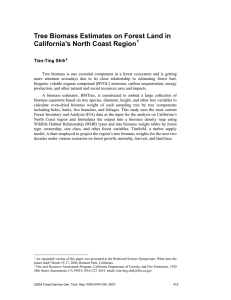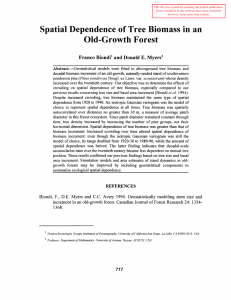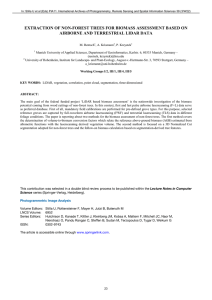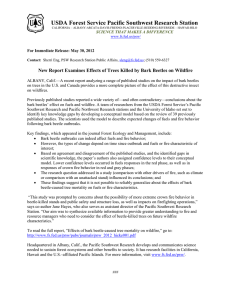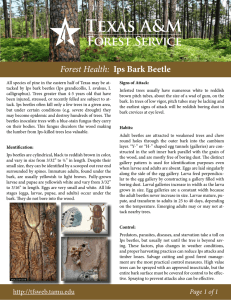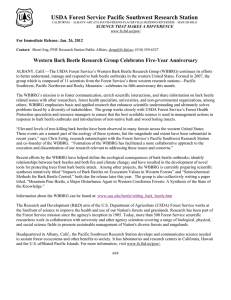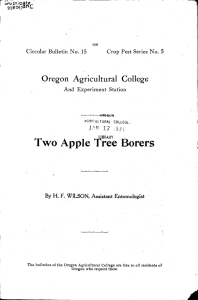Comments on annex 3 of A/R Working Group Meeting 37,... "Estimation of carbon stocks and change in carbon stocks of...
advertisement
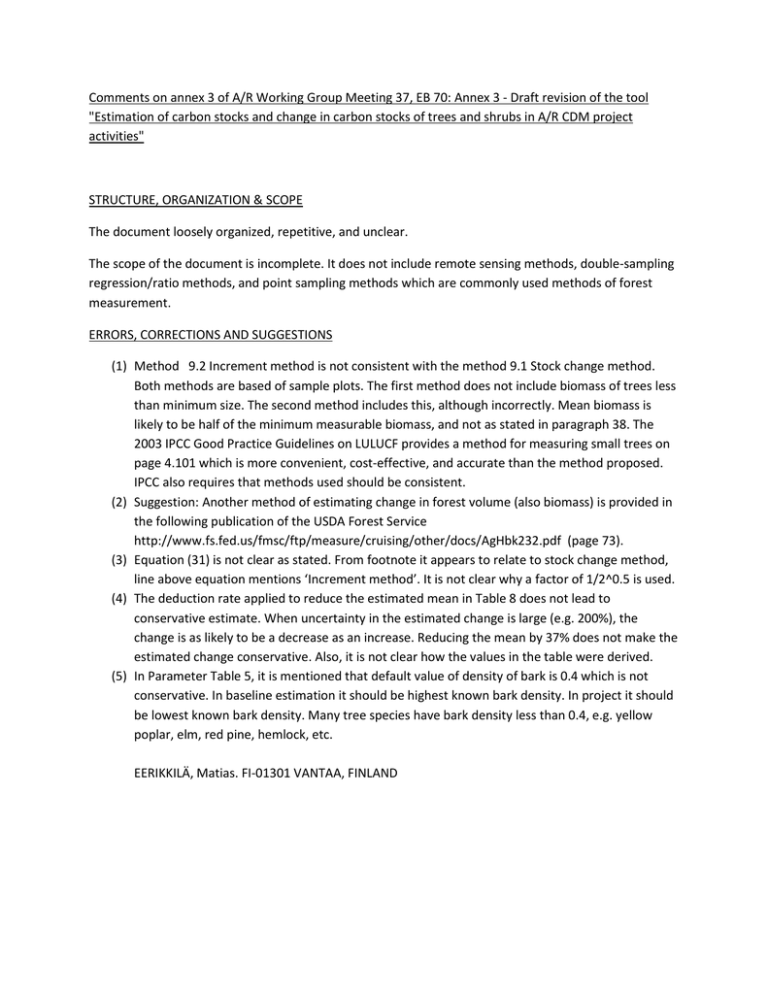
Comments on annex 3 of A/R Working Group Meeting 37, EB 70: Annex 3 - Draft revision of the tool "Estimation of carbon stocks and change in carbon stocks of trees and shrubs in A/R CDM project activities" STRUCTURE, ORGANIZATION & SCOPE The document loosely organized, repetitive, and unclear. The scope of the document is incomplete. It does not include remote sensing methods, double-sampling regression/ratio methods, and point sampling methods which are commonly used methods of forest measurement. ERRORS, CORRECTIONS AND SUGGESTIONS (1) Method 9.2 Increment method is not consistent with the method 9.1 Stock change method. Both methods are based of sample plots. The first method does not include biomass of trees less than minimum size. The second method includes this, although incorrectly. Mean biomass is likely to be half of the minimum measurable biomass, and not as stated in paragraph 38. The 2003 IPCC Good Practice Guidelines on LULUCF provides a method for measuring small trees on page 4.101 which is more convenient, cost-effective, and accurate than the method proposed. IPCC also requires that methods used should be consistent. (2) Suggestion: Another method of estimating change in forest volume (also biomass) is provided in the following publication of the USDA Forest Service http://www.fs.fed.us/fmsc/ftp/measure/cruising/other/docs/AgHbk232.pdf (page 73). (3) Equation (31) is not clear as stated. From footnote it appears to relate to stock change method, line above equation mentions ‘Increment method’. It is not clear why a factor of 1/2^0.5 is used. (4) The deduction rate applied to reduce the estimated mean in Table 8 does not lead to conservative estimate. When uncertainty in the estimated change is large (e.g. 200%), the change is as likely to be a decrease as an increase. Reducing the mean by 37% does not make the estimated change conservative. Also, it is not clear how the values in the table were derived. (5) In Parameter Table 5, it is mentioned that default value of density of bark is 0.4 which is not conservative. In baseline estimation it should be highest known bark density. In project it should be lowest known bark density. Many tree species have bark density less than 0.4, e.g. yellow poplar, elm, red pine, hemlock, etc. EERIKKILÄ, Matias. FI-01301 VANTAA, FINLAND



